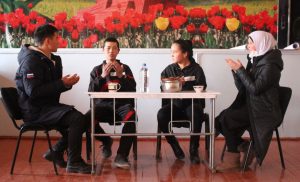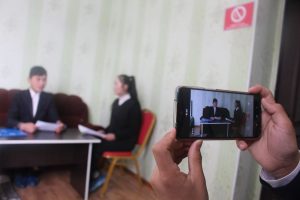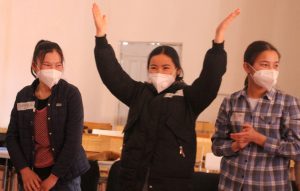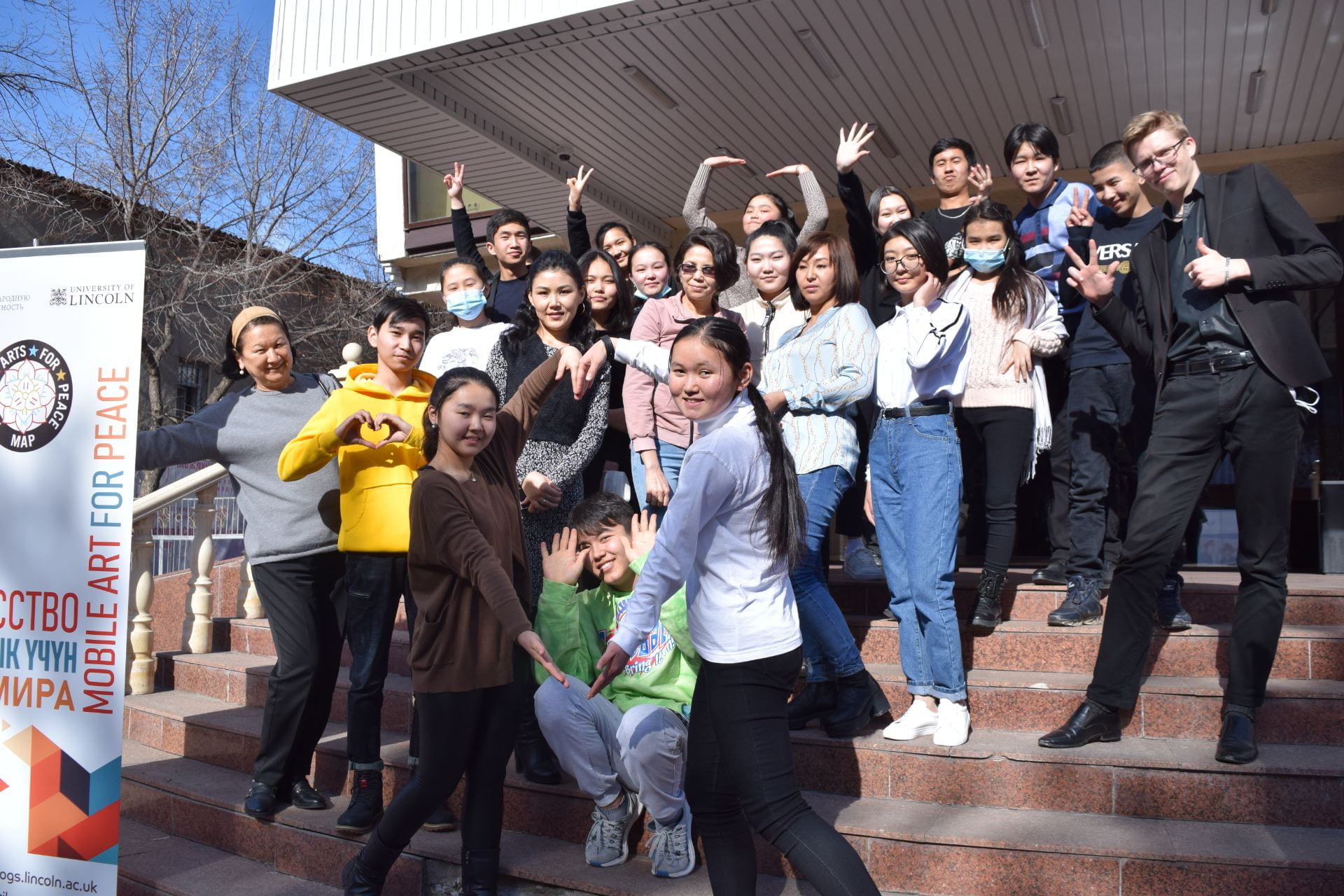Latest posts
- Policy documents: UNICEF Innocenti Discussion Paper on Children and Youth Participation (August 2025) 26 August 2025
- MAP International Online Conference 2025: Session Summaries Report 24 July 2025
- MAP 2025 Conference Highlights: Recordings and Slides 23 July 2025
- Journal article: Reimagining Peace Education in Nepal: Arts-Based, Learner-Centric Pedagogy for Social Justice and Equity 13 July 2025
- Curricula: Mithila art-focused local curriculum in Nepal 2 July 2025
- MAP International Online Conference 2025 1 June 2025
- Policy brief: Gira Ingoma book and policy brief: “The Culture We Want, for the Woman We Want” 28 November 2024
- Manuals and toolkits: GENPEACE Children’s Participation Module in the Development Process 13 November 2024
- Journal article: [Working Paper] Gira Ingoma – One Drum per Girl: The culture we want for the woman we want 30 October 2024
- Curricula: Beyond Tradition: Psychosocial Model 30 October 2024
- Curricula: Beyond Tradition Module: Revitalizing Lenong as a Model for Teaching Betawi Arts 30 October 2024
- Curricula: Beyond Tradition: Lenong Revitalisation as a Model for Teaching Betawi Cultural Arts 30 October 2024
Training of Young Changemakers in Kyrgyzstan
4th July 2021
Authors: Anara Eginalieva, Tajyka Shabdanova, Helena-Ulrike Marambio
‘I will no longer believe in the word “impossible”, [instead] I will act’ stated one young participant after the attending a five-day ‘Training the Trainers’ (TOT) workshop organised by the Kyrgyz non-profit organisation and MAP partner Foundation for Tolerance International (FTI). FTI ran a series of five-day TOTs with young people and educators across the country. The blended face-to-face and online workshop sessions were organised in partnership with 16 schools in Batken, Osh, and Jalal-Abad provinces (oblasts), and the new migrant settlements around the capital city of Bishkek. The MAP partnerships enabled FTI to train over 140 schoolchildren between 14 and 18 years, and 8 teachers between November 2020 and March 2021.

The training aimed: a) to enhance critical thinking introduce young people to research methods; b) to explore creative and artistic tools; and c) to increase young people’s self-confidence and self-esteem in order to engage with diverse audiences. By including educators as trainees (and eventual trainers), FTI aimed to raise awareness about creative methods to facilitate two-way, intergenerational communication between young people and adults.
Critical thinking
Creative exercises like the ‘Conflict Tree’ helped young people to identify the root causes of problems and their consequences. Young people shared personal and community-based issues such as the theme ‘family conflicts’ and its effect on their motivation to study. In addition to this, participants identified issues such as the precarious situation of young people whose parents migrated to other countries for work and the influence of social media on people’s time and self-perception. After a first round of brainstorming, each group was asked to pick a specific problem and to analyse its root causes and consequences in depth. The results were presented to the whole group as a means to develop the young people’s confidence in public speaking and to extend peer-to-peer and community-based problem-solving.
Following the conflict analysis via ‘Conflict Tree’, FTI carried out a mapping exercise that signposted young people to relevant organisations, local authorities, and individuals who could help to address the identified problems. During the activity, one young participant stated: ‘I did not think about our problems before. Now, I want teachers, the mayor, and the police to know our problems.’ Another young person from Jalal-Abad stated: ‘This [training] pushed me to think about various problems in our village; now I look at the problem from different perspectives.’
Young researchers: ‘It’s about unravelling something’
FTI created 16 MAP Young Researcher Clubs to train the youth research participants in critical thinking and research methods. During the first activity, young researchers explored the meaning of ‘research’, its purpose, and research approaches. To prompt the conversation, FTI asked participants to think about the beneficiaries of their study and how they could use the findings. Young participants commented: ‘It’s about unravelling something’; ‘It’s an analysis’; and ‘It’s to investigate the problems [and] to solve them correctly.’ Moreover, young people considered the purpose and advantage of ‘collaborative action research.’ They recognised the value of a research team – its strength based on the members’ varying skills and talents – and its efficiency resulting from the possibility to distribute tasks, to consider varying viewpoints, and to share responsibilities. Moreover, they examined the characteristics of a researcher through the exercise ‘Super Explorer’ that asked participants to compile a list of required skills, abilities, and tools of a good researcher. Based on discussions, young people were able to list several skills (e.g. good observer, clear writing), abilities (e.g. patient, tolerant, flexible), and tools (e.g. pen, paper, recorder, documents). They also reflected on their weaknesses, like lack of punctuality and patience.

In the training, FTI focused on conflict analysis and the active participation of young people in decision-making at a community level. To this end, as part of the first exercise, participants had to sort a set of cards in chronological order that featured six research stages and tasks (research topic; target research participants; research methods supporting data collection and analysis; and ways to disseminate the findings). Next, participants were divided into groups. Each group had to decide upon a problem and explain the steps and measures they would take to design a research proposal to examine the youth-based issue. The ‘problem’ had to meet three criteria: 1) it needed to have an impact on a great number of people, 2) it had to influence the development of young people and, 3) it had to be resolvable at the local level. In Jalal-Abad and Osh oblast, participants chose to present a study on the lack of interest in education by youth. The proposed research question sought to examine the reasons for their disinterest. In Jalal-Abad, participants aimed to collect data through surveys with students of grades 9 to 11 and count the responses. Furthermore, they proposed to present their findings through video clips and forum theatre. Young people from Osh took a slightly different approach – they surveyed teachers, students, and parents, and presented their findings through drawings and video clips. At this point of the training, both adults and young people were struggling with the final step – the dissemination of findings.
‘You feel that you are treated like an adult’
Overall, the exercise sought to place young people in the position of decision-making: what type of problem would they pick and how would they tackle it? How would they discuss and take decisions? By the end of the TOT, an adult research participant from Osh (educator) observed a change in the attitude and behaviour of participants during the TOT as well as an increased level of tolerance and respect for the opinions of other students in class. This observation was made by other adult participants who noticed a general change in the attitude and behaviour of schoolchildren after the training in both ways – among their peers and with educators. One youth participant noted: ‘In [this] project I really like the fact that you can speak openly about the problems that bother you. You feel that you are treated like an adult, a full-fledged person, they [MAP team and educators] give you the opportunity to convey your opinion to others.’
To deepen participants’ analytical skills, FTI carried out two activities that focused on the cause and consequences of a problem as well as affected persons and other stakeholders. Young people from Chui (a new settlement around the capital of Bishkek), talked about the absence of a psychologist at school due to a lack of state funding. Another obstacle identified was the lack of awareness of the role and relevance of a psychologist by teachers and parents. The overall lack of awareness and knowledge were determined as reasons that led to a rising trend of suicides among young people and youth, intergenerational conflicts between children and parents, teachers and pupils, as well as growing cases of mental health conditions in the community. To interrogate and visualise young people’s concerns, groups were asked to develop a ‘Conflict Tree’ to be presented to the group. The day closed with a mapping of the target groups who are directly affected by the problem, immediate stakeholders (other individuals who are also impacted by the situation) and indirect stakeholders (individuals or institutions that seek to address an issue). The last activity was challenging for many participants who were not familiar with governmental structures and other existing organisations. However, they were able to point to several affected groups, such as young people, parents, teachers, youth committees, NGOs and community leaders and community activists. Whilst reflecting, FTI considered the necessary step to introduce and clarify the term ‘decision-maker’, his/ her tasks, and ways to interact with the corresponding individual.
Arts-based Methods
FTI introduced arts-based methods including forum theatre and film making, among others, to enable young people to communicate their problems and potential solutions. To begin the discussion on arts-based communication, FTI asked young people to reflect on ‘communication’, its meaning and what it takes to create a meaningful conversation and to transmit a powerful message. Some participants stressed the usefulness of drawings to convey a message. One participant recognised the value of traditional Kyrgyz art to bring people together: ‘Art unites us. If we look at the works of Chinghiz Aitmatov [Kyrgyz novelist], they unite us.’ By choosing different arts-based forms, FTI equipped the trainees with additional tools to reach out to various social groups from local (e.g. peer, parents, teachers), regional (e.g. Mayor’s Office) to national levels (e.g. Ministry of Education) – either online through social media or face-to-face.

At first, FTI introduced ‘forum theatre’, its methodology, the roles, and rules (i.e. the interaction between the actor(s) and the audience facilitated by a Joker). Then, FTI encouraged participants to think about different situations in their communities and to share moments in which a person tried to do something but was faced with various obstacles. In the next step, young people had to select a story that set the baseline for two scripts and productions. In Batken, participants opted for alcohol abuse by a family father and the negative impact of early marriage on a female young person. Most people, both male and female, stressed that girls and women are always blamed for existing problems in daily life. In turn, participants took up different roles in the forum theatre performance – this way, they got the opportunity to familiarise themselves with this tool from different perspectives. Furthermore, they discussed the ability of forum theatre to visualise and transmit their research findings and engage in a dialogue with the audience to find joint solutions for identified problems.
Subsequently, FTI used video and different social media channels to share young people’s concerns and research findings. It further explored the link between video clips, social media, and social activism. As one young participant noted: ‘Social networks are a platform to exchange information with your eyes.’ Moreover, FTI showed participants how to develop video scripts, filming (e.g. angles) and editing before asking each group to develop their video clips. These clips were quite diverse and ranged from patriarchal structures, environmental pollution to corruption and problems to access education.
‘There are no languages in art, there are no barriers to understand each other.’

Throughout the sessions, young people considered the usefulness and feasibility of each tool for specific issues of concern. One participant stated: ‘There are no languages in art, there are no barriers to understand each other. I believe that with the help of art, we [can] raise important problems of young people and bring them to our deputies and ministers.’ Another young person reflected on the presence of art in daily life and its potential for conflict prevention: ‘If we get a little closer to the arts, people would not have time for conflicts. I have never thought about the role of art in our life before; it turns out it surrounds us everywhere!’ Participants – schoolchildren and educators – echoed the potential of the arts to communicate issues of concern and address them through creative dialogue. In an interview after the training, one educator shared her plans to use forum theatre and video in parent-teacher meetings to raise awareness about the impact of parental conflicts on children.
In feedback sheets, participants expressed the impact the training had on their personal perceptions of arts-based research. One participant from Chui wrote: ‘Before I [did not think that I could] be a director, actress, [and] editor – now I am sure that I can!’ Another person stated: ‘For forum theatre and the filming of video stories, [it is] necessary [to be] skill[ed] in teamwork, balancing [opinions], good thinking, strong energy, [and] creative search.’
Self-esteem and self-confidence

Throughout the training, FTI collected various statements by young people who continuously expressed their change of mind and personal development. Several of them mentioned feelings of shyness, insecurity to express their opinion, and perceived lack of talents at the start of the training. This changed dramatically and ranged from feelings of comfort to speak in front of a group, the ability and freedom to share one’s thoughts (‘listen and be listened to’), the feeling of being taken seriously as an adult, and the skillset to identify and address a problem. The gained confidence and developed skillset to express oneself supported the group dynamics in class – some young people who were struggling with learning and socialising were able to communicate better with educators and peers, and developed a renewed interest in education. Overall, young people become more mindful and proactive in addressing issues for conflict prevention. At the end of the five days, one participant concluded: ‘Even if I cannot solve the problems of the [whole] village, I can freely express my thoughts now.’
We would like to thank FTI’s staff members Shakhsanam Akmatalieva, Nurgul Sultanova, Cholpon Kylzhyrova, and Bakhram Rakhmankulov for their invaluable insights.
